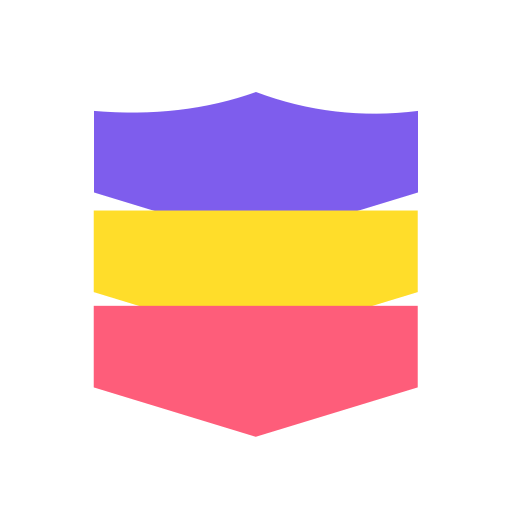can you uninstall ios 16
Uninstalling iOS 16: A Complete Guide
In today’s fast-paced world, technology is constantly evolving and upgrading. One such advancement in the tech world is the release of new versions of operating systems for mobile devices. iOS, the operating system developed by Apple for its iPhone, iPad, and iPod Touch devices, is no exception to this trend.
With each new release, users are often eager to upgrade their devices to experience the latest features and improvements. However, sometimes, the new version may not meet their expectations, and they may want to revert to the previous version. This is where the need to uninstall iOS 16 arises.
iOS 16 was the latest version of iOS, released by Apple in September 2021. It brought several new features and updates, such as redesigned widgets, an App Library, and improvements to Siri and iMessage. However, not all users were satisfied with this update. Some faced issues with their devices, while others simply preferred the previous version of iOS. If you are one of those users and want to uninstall iOS 16, then you have come to the right place. In this article, we will provide you with a complete guide on how to uninstall iOS 16.
Before we dive into the process of uninstalling iOS 16, let’s first understand what it means to uninstall an operating system and the potential consequences of doing so.
Uninstalling an operating system means removing the current version of the OS and reverting to the previous version. In this case, it would mean removing iOS 16 and going back to the previous version, which is iOS 15. This process is also known as downgrading. However, it is worth noting that this is not a simple task and should be done with caution. It can have several consequences, such as data loss, device instability, and in some cases, even rendering the device unusable. Therefore, it is crucial to follow the steps carefully and back up your device before proceeding with the uninstallation process.
Now that we have a basic understanding of what uninstalling an operating system entails, let’s explore the steps to uninstall iOS 16.
Step 1: Back up your device
As mentioned earlier, the first and most crucial step before uninstalling iOS 16 is to back up your device. This will ensure that in case something goes wrong during the process, you will still have all your data and settings saved. You can back up your device using iCloud or iTunes. To back up using iCloud, go to Settings > [your name] > iCloud > iCloud Backup > Back Up Now. To back up using iTunes, connect your device to your computer , open iTunes, and click on the device icon. Then, click on “Back Up Now.”
Step 2: Download iOS 15 firmware
To uninstall iOS 16, you will need to have the previous version, which is iOS 15, downloaded on your computer. You can find the firmware for your specific device model on websites like IPSW Downloads or iTunes.
Step 3: turn off Find My iPhone
Before proceeding with the uninstallation process, it is essential to turn off Find My iPhone. This feature is designed to prevent unauthorized users from accessing your device in case it gets lost or stolen. To turn it off, go to Settings > [your name] > Find My > Find My iPhone and toggle it off.
Step 4: Connect your device to your computer
Using a lightning cable, connect your device to your computer.
Step 5: Open iTunes
Once your device is connected, open iTunes on your computer.
Step 6: Enter DFU mode
To uninstall iOS 16, you will need to enter Device Firmware Update (DFU) mode. This mode allows your device to communicate with iTunes without activating the iOS. The steps to enter DFU mode vary depending on your device model. Here are the general steps:
– For iPhone 8 or newer, press and release the Volume Up button, press and release the Volume Down button, then press and hold the Side button until the screen goes black. Release the Side button after 5 seconds while still holding the Volume Down button until your device is recognized in iTunes.
– For iPhone 7, press and hold the Volume Down and Side buttons together until the screen goes black. Release the Side button after 5 seconds while still holding the Volume Down button until your device is recognized in iTunes.
– For iPhone 6S or older, press and hold the Home and Side buttons together until the screen goes black. Release the Side button after 5 seconds while still holding the Home button until your device is recognized in iTunes.
Step 7: Restore your device
Once your device is in DFU mode, a pop-up will appear on your computer asking if you want to restore your device. Click on “Restore” to initiate the process.
Step 8: Select the downloaded iOS 15 firmware
After clicking on “Restore,” a new window will appear, prompting you to select the firmware to install on your device. Select the iOS 15 firmware you downloaded in step 2.
Step 9: Confirm the restoration process
Once you have selected the firmware, a warning message will appear, stating that all data will be erased from your device. Click on “Restore” to confirm the process.
Step 10: Wait for the process to complete
The restoration process may take some time, so be patient and do not disconnect your device during this time. Once the process is complete, your device will reboot, and you will see the “Hello” screen.
Step 11: Set up your device
Follow the on-screen instructions to set up your device. If you have backed up your device, you can restore your data from the backup.
Congratulations! You have successfully uninstalled iOS 16 and reverted to the previous version, iOS 15.
In conclusion, uninstalling iOS 16 is not a simple task, and it should be done with caution. It is crucial to back up your device and follow the steps carefully to avoid any potential data loss or device instability. Additionally, it is worth noting that Apple may stop signing the previous version of iOS, which means you will not be able to uninstall iOS 16 and go back to iOS 15. Therefore, it is advisable to make the switch as soon as possible if you are not satisfied with the new iOS version.
We hope this article has provided you with a comprehensive guide on how to uninstall iOS 16. Remember to always research and understand the implications before making any changes to your device’s operating system. Happy downgrading!
calculator app for android
In today’s fast-paced world, having a calculator at our fingertips has become a necessity. Gone are the days when people had to carry bulky calculators around or rely on mental math for simple calculations. With the rise of smartphones, calculator apps have become a popular choice for users of all ages. And when it comes to Android, there are a plethora of options available in the Google Play Store. In this article, we will dive deep into the world of calculator apps for Android and explore their features, functionalities, and popularity.
First and foremost, let’s understand what a calculator app is. A calculator app is a software application that performs mathematical calculations. It mimics the functionality of a physical calculator, but with added features and options. These apps are designed to make calculations faster, easier, and more accurate. They come in various forms, from basic calculators that perform simple arithmetic operations to scientific calculators that can solve complex equations and graph functions.
The first calculator app for Android was introduced in 2008 by Google. It was a basic calculator with limited features. But as the popularity of Android grew, so did the need for more advanced calculator apps. Today, there are hundreds of calculator apps available on the Google Play Store, each with its unique set of features and designs.
One of the main reasons for the popularity of calculator apps is their convenience. Unlike physical calculators, which can be bulky and easily misplaced, calculator apps are always with us on our smartphones. We carry our phones everywhere, making it easy to access the calculator app whenever needed. This convenience has made calculator apps an essential tool for students, professionals, and anyone who needs to perform calculations on a regular basis.
Another reason for the popularity of calculator apps is their versatility. Unlike physical calculators, which are designed for a specific purpose, calculator apps can perform various types of calculations. Basic calculators can handle simple arithmetic operations like addition, subtraction, multiplication, and division. Scientific calculators, on the other hand, have advanced features like trigonometric functions, logarithms, and exponential calculations. Some calculator apps also have unit converters, currency converters, and even mortgage calculators.
One of the most popular calculator apps for Android is Google’s Calculator. It comes pre-installed on most Android devices and has a simple and user-friendly interface. It offers all the basic functions, along with a history feature that allows users to see their previous calculations. In addition, the Google Calculator also has a built-in unit converter, making it a one-stop solution for all basic calculations.
Another popular choice among Android users is the Calculator Plus app. It has a sleek design and offers both basic and scientific calculator modes. It also has a customizable interface, allowing users to choose from different themes and color schemes. The app also has a memory feature, which saves previous calculations for future reference.
For those who need a more advanced calculator, the MyScript Calculator app is a perfect choice. It allows users to write calculations on the screen with their finger or stylus, making it feel like writing on a piece of paper. The app then recognizes the handwritten calculations and solves them instantly. It also has a scientific mode and supports calculations with fractions and decimals.



Apart from these popular choices, there are also many other calculator apps available on the Google Play Store. Some of these apps are designed for specific purposes, like the RealCalc Scientific Calculator, which is a favorite among engineering and science students. It has all the features of a physical scientific calculator, including the ability to solve equations and graph functions. Another popular choice is the Photomath app, which allows users to take a photo of a mathematical problem and solves it instantly. This app is particularly useful for students who struggle with complex equations.
In addition to their convenience and versatility, calculator apps also offer additional features that make them stand out. These features include the ability to save and share calculations, voice input, and gesture control. Some apps also have a floating calculator option, which allows users to access the calculator from any screen without having to close other applications.
However, with so many options available, choosing the right calculator app can be overwhelming. To make the decision easier, users can consider factors like the app’s design, features, and user reviews. They can also try out different apps and see which one suits their needs the best.
In conclusion, calculator apps for Android have come a long way since their inception. They have become an integral part of our daily lives and have made calculations faster, easier, and more accurate. With their convenience, versatility, and advanced features, these apps have become a must-have for every smartphone user. Whether you need a simple calculator for everyday use or a scientific calculator for complex calculations, there is an app for everyone. So, next time you need to perform a calculation, ditch the physical calculator and try out one of the many calculator apps available on the Google Play Store.
best screen time app
In today’s digital age, it can be all too easy to get lost in the endless scroll of social media, binge-watch hours of TV shows, or mindlessly play games on our devices. As a result, many individuals, especially parents, are seeking ways to limit screen time and promote healthier habits. This is where screen time apps come in – tools designed to help users manage and regulate the amount of time they spend on their devices. However, with so many options available, it can be overwhelming to choose the best screen time app. In this article, we will delve into the world of screen time apps and help you find the perfect one for your needs.
What is a Screen Time App?
A screen time app is a software that allows users to monitor and restrict the amount of time they spend on their devices. These apps often come with additional features such as content filters, app blockers, and scheduling capabilities. They are designed to help individuals, especially parents, manage their screen time and promote healthier habits.
Why is Limiting Screen Time Important?
Before we dive into the best screen time apps, let’s first understand why limiting screen time is essential. According to the American Academy of Pediatrics, excessive screen time can lead to a range of negative effects on children, including obesity, poor sleep, and behavioral problems. In adults, too much screen time has been linked to increased stress, decreased productivity, and a sedentary lifestyle. Additionally, excessive screen time can also lead to a decrease in face-to-face interactions, which is crucial for social development and building relationships.
Benefits of Using a Screen Time App
Screen time apps offer a range of benefits, making them a valuable tool for individuals looking to manage their device usage. Some of the key advantages include:
1. Promotes Healthy Habits: By setting limits on screen time, these apps encourage users to engage in other activities, such as exercise, reading, or spending time with family and friends.
2. Improves Productivity: With the ability to block apps and websites, screen time apps can help individuals stay focused and productive by eliminating distractions.
3. Protects against Harmful Content: Many screen time apps come with content filters, allowing parents to restrict access to inappropriate or harmful content for their children.
4. Creates a Balanced Relationship with Technology: By setting boundaries on device usage, screen time apps can help individuals develop a healthy relationship with technology, rather than being constantly glued to their screens.
5. Encourages Communication: Some screen time apps allow for communication between parents and children, fostering open dialogue about device usage and promoting healthy habits.
Now that we understand the importance and benefits of limiting screen time let’s take a look at the best screen time apps available in the market.
1. OurPact



OurPact is one of the most popular screen time apps for parents. It offers a range of features, including the ability to schedule screen time, block apps and websites, and set time limits for specific apps. OurPact also has a geolocation feature, allowing parents to track their child’s device in real-time. The app is available for both iOS and Android devices, and the basic version is free to use.
2. Screen Time
Screen Time is another popular choice for parents looking to manage their child’s screen time. This app allows parents to set daily screen time limits, block apps and websites, and even reward their child with extra screen time for completing tasks or chores. Screen Time also offers a range of educational features, such as the ability to block social media during school hours. The app is available for iOS, Android, and Kindle devices.
3. Moment
Moment is a screen time app that focuses on helping individuals achieve a balance with their device usage. It offers a range of features, including the ability to track daily screen time usage, set daily limits, and receive notifications when time limits are reached. Moment also has a paid version that allows for the blocking of specific apps and websites. The app is available for iOS and Android devices.
4. FamilyTime
FamilyTime is a comprehensive screen time app that offers a range of features for parents, including location tracking, web filtering, and app blocking. One unique feature of FamilyTime is the ability to set geofences, allowing parents to receive alerts when their child enters or leaves a designated area. The app is available for iOS and Android devices, and a free version is available, with the option to upgrade to a premium version for additional features.
5. Qustodio
Qustodio is a screen time app specifically designed for families. It offers a range of features, including the ability to set time limits, block apps and websites, and monitor social media activity. Qustodio also has a panic button feature, allowing children to send an alert to their parents in case of an emergency. The app is available for iOS, Android, Windows, and Mac devices, and offers a free version with limited features.
6. Freedom
Freedom is a screen time app designed to help individuals break their device addiction and improve their productivity. It allows users to block websites, apps, and notifications for a set period, allowing them to focus on their work or other activities without distractions. Freedom is available for iOS, Android, Windows, and Mac devices, and offers a free trial before requiring a subscription.
7. Kidslox
Kidslox is a screen time app designed for parents with young children. It offers a range of features, including the ability to set time limits, block apps and websites, and schedule screen time. Kidslox also has a unique bedtime mode, which automatically blocks all apps and websites during bedtime hours. The app is available for iOS and Android devices, and a free version is available with limited features.
8. AppDetox
AppDetox is a screen time app designed to help individuals break their device addiction. It allows users to set their own rules and restrictions, such as limiting the number of times an app can be opened or setting a time limit for specific apps. AppDetox is available for Android devices, and a free version is available with limited features.
9. Kids Place
Kids Place is a screen time app designed for parents with young children. It offers a range of features, including the ability to set time limits, block apps and websites, and restrict in-app purchases. Kids Place also has a geofencing feature, allowing parents to set a virtual boundary and receive alerts when their child leaves the designated area. The app is available for Android devices, and a free version is available with limited features.
10. Space
Space is a screen time app designed to help individuals break their device addiction and promote mindful device usage. It offers features such as setting time limits, tracking usage, and providing personalized insights and recommendations on how to reduce screen time. Space is available for iOS and Android devices, and a free version is available with limited features.
Conclusion



In conclusion, screen time apps can be a valuable tool for individuals looking to manage their device usage and promote healthier habits. With a range of features and options available, there is no one “best” screen time app. It ultimately depends on the individual’s needs and preferences. We recommend trying out a few different options to find the one that works best for you and your family. Remember, the goal is to find a healthy balance with technology, and screen time apps can be a great tool to help achieve that.
